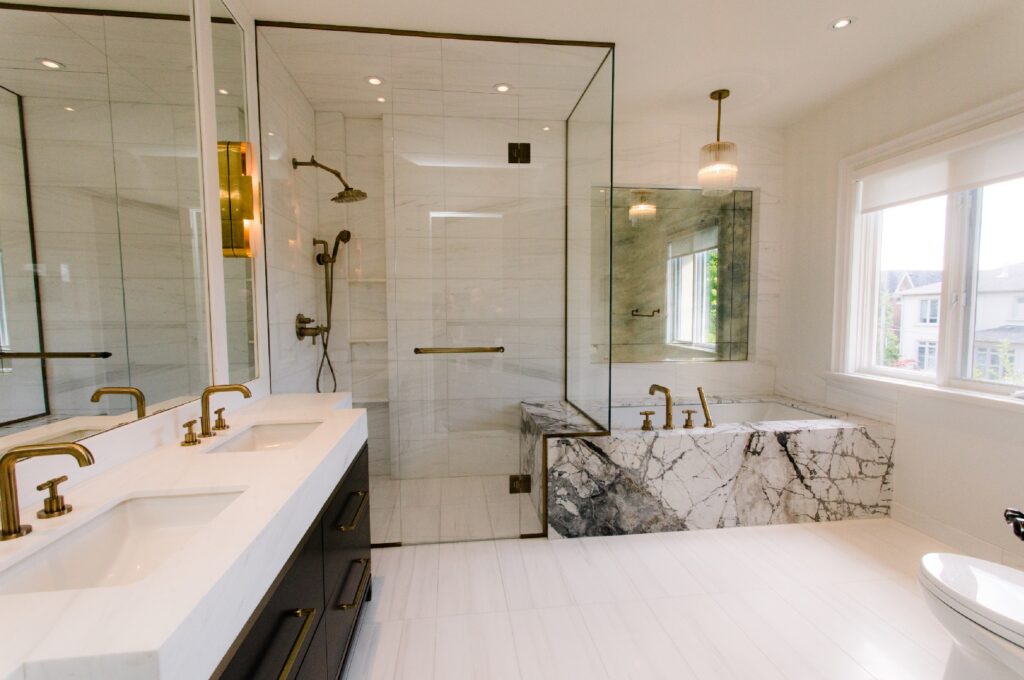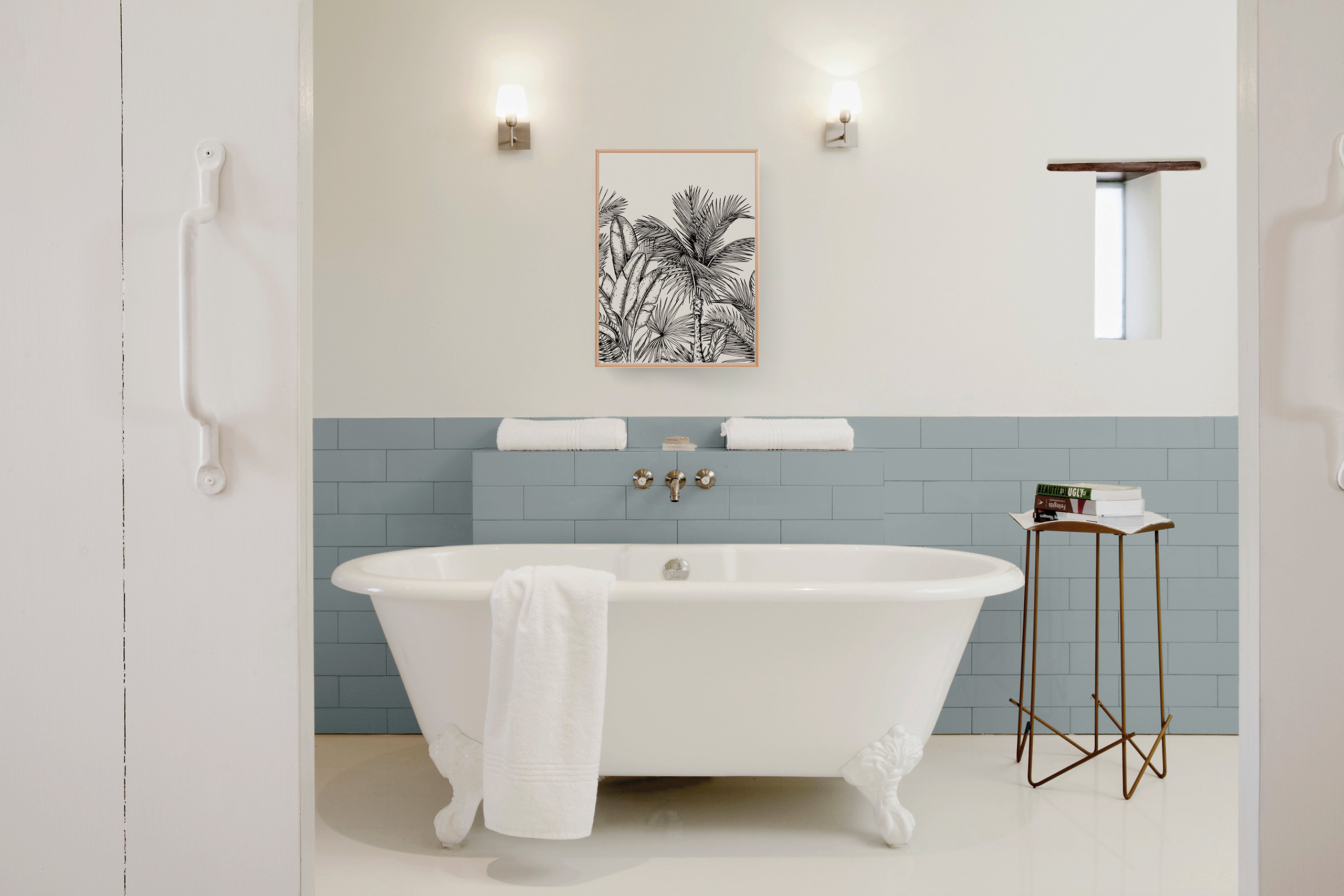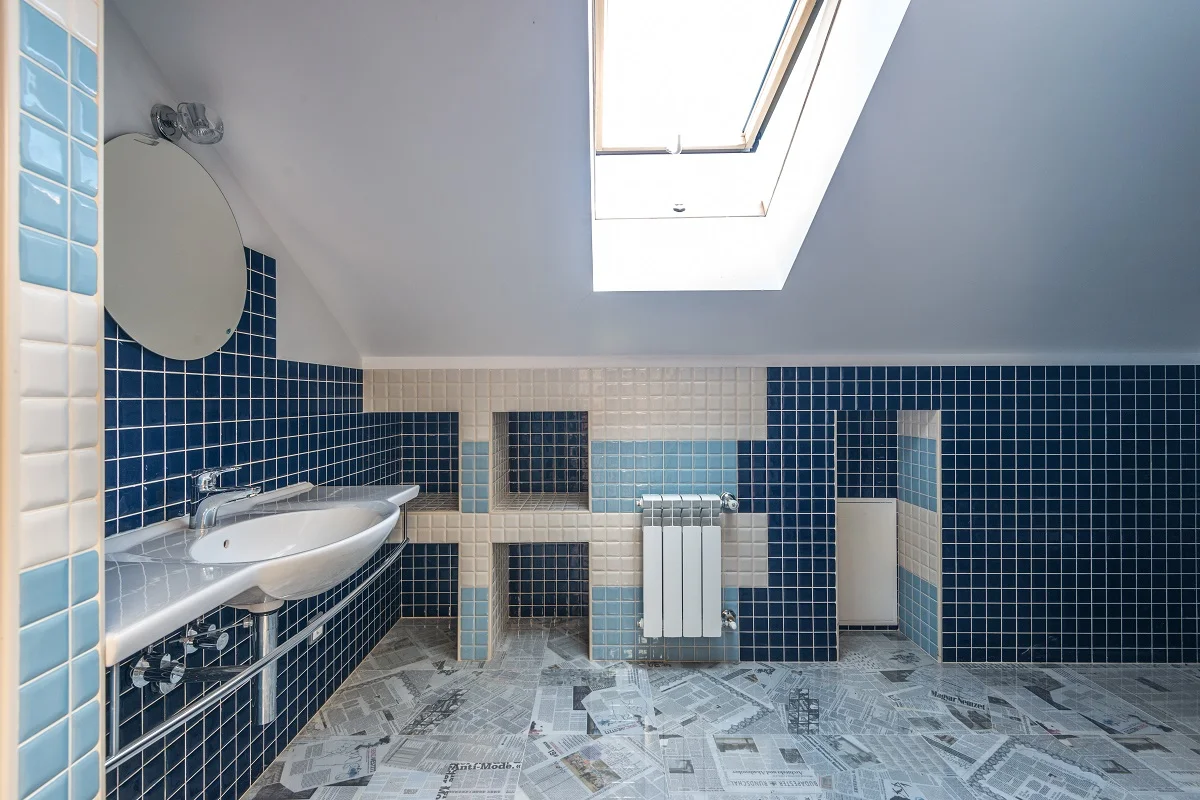Satin Paint Properties and Bathroom Considerations: Is Satin Paint Ok For Bathroom

Satin paint is a popular choice for bathroom walls due to its balance of sheen, durability, and ease of cleaning. However, bathrooms present unique challenges for paint due to their high moisture levels and potential for mold growth. Understanding the properties of satin paint and its suitability for bathroom applications is crucial for achieving a long-lasting and aesthetically pleasing finish.
Satin Paint Properties
Satin paint offers a balance of sheen and practicality, making it a versatile choice for various applications, including bathrooms. Here are some key characteristics of satin paint:
- Sheen: Satin paint has a soft, low-luster sheen that provides a subtle elegance without being overly reflective. This sheen is less prone to highlighting imperfections in the wall surface compared to gloss paints.
- Durability: Satin paint is more durable than matte paint, offering better resistance to scuffs, scratches, and stains. This increased durability is particularly beneficial in high-traffic areas like bathrooms, where walls are susceptible to moisture and accidental contact.
- Cleanability: Satin paint’s smooth surface allows for easy cleaning with soap and water. Its slightly higher sheen makes it easier to wipe away dirt and grime, maintaining a fresh look over time.
Bathroom Considerations
Bathrooms present unique challenges for paint due to their high moisture levels and potential for mold growth. Here are some considerations for choosing paint for bathroom applications:
- Moisture and Humidity: Bathrooms are inherently humid environments due to showers and baths. Paint must be able to withstand moisture without peeling, cracking, or fading.
- Mold Growth: Mold can thrive in humid environments, particularly in poorly ventilated bathrooms. Paint should be mildew-resistant to prevent mold growth and discoloration.
- Ventilation: Proper ventilation is crucial for mitigating moisture and humidity levels in bathrooms. Ensuring adequate ventilation helps prevent mold growth and extends the life of paint.
Suitability of Satin Paint for Bathrooms
Satin paint is generally a good choice for bathrooms due to its moisture resistance, durability, and cleanability. Compared to other paint finishes, satin paint offers several advantages:
- Matte Paint: Matte paint lacks sheen and is more prone to showing imperfections. It is also more susceptible to stains and can be difficult to clean. While it offers a subtle, elegant finish, it is not the most practical choice for bathrooms.
- Semi-Gloss Paint: Semi-gloss paint has a higher sheen than satin paint, making it more reflective and prone to highlighting imperfections. It is more durable and easier to clean than satin paint but may not be as aesthetically pleasing for all bathroom styles.
- Gloss Paint: Gloss paint has the highest sheen and is the most durable and easiest to clean. However, its high reflectivity can make it unsuitable for bathrooms with uneven walls or limited natural light.
Advantages of Satin Paint for Bathrooms

Satin paint offers a compelling combination of durability and aesthetics, making it an excellent choice for bathrooms. Its unique properties provide a balance between the practicality of a matte finish and the subtle sheen of a semi-gloss, resulting in a finish that’s both functional and visually appealing.
Resistance to Moisture and Cleaning Ease
Satin paint’s primary advantage in bathrooms is its ability to withstand moisture and frequent cleaning. Its slightly glossy surface repels water and prevents it from seeping into the paint film, minimizing the risk of mildew growth. This characteristic is particularly valuable in areas prone to moisture, such as shower stalls and tub surrounds. The smooth surface also makes cleaning easier, as dirt and grime are less likely to adhere to the paint.
Satin paint’s water-resistant properties make it an excellent choice for high-traffic areas in the bathroom.
Satin Paint in Specific Bathroom Areas
Satin paint excels in various bathroom areas due to its specific properties:
- Shower Stalls: The water-resistant nature of satin paint makes it ideal for shower stalls. It prevents water from penetrating the paint film, minimizing the risk of mildew and mold growth. Satin paint also cleans easily, making it simple to maintain a hygienic shower environment.
- Tub Surrounds: Satin paint’s durability and moisture resistance make it a good choice for tub surrounds. It can withstand the constant exposure to water and cleaning agents, ensuring a long-lasting finish. The subtle sheen also adds a touch of elegance to the bathroom.
- Vanity Walls: Satin paint is an excellent option for vanity walls as it can withstand the splashes and spills that are common in this area. Its easy-to-clean surface helps maintain a fresh and hygienic look.
Considerations and Potential Drawbacks

While satin paint offers many benefits for bathrooms, it’s crucial to consider potential drawbacks and how to mitigate them. Satin finishes, with their slight sheen, can be more susceptible to showing imperfections in the underlying surface compared to matte finishes. Additionally, satin paint might be slightly more expensive than matte paint.
Surface Preparation and Application
Proper surface preparation and application techniques are essential to minimize the visibility of imperfections and ensure a smooth, even finish. Before applying satin paint, it’s crucial to thoroughly clean the bathroom walls and ceiling to remove dirt, grease, and any loose paint. Any cracks or holes should be filled with spackle or patching compound, and the surface should be sanded smooth to create a uniform base for the paint.
Applying satin paint in thin, even coats will help minimize the appearance of brushstrokes and imperfections. Using a high-quality brush or roller specifically designed for satin finishes can also contribute to a better finish.
Alternative Paint Finishes, Is satin paint ok for bathroom
In some bathroom areas, alternative paint finishes might be more suitable.
High-Traffic Areas
In areas like shower stalls or around sinks, where moisture and frequent cleaning are common, a semi-gloss or gloss finish might be more durable and easier to clean. These finishes are more resistant to mildew and moisture, making them ideal for high-traffic areas that are prone to water splashes.
Ceilings
For bathroom ceilings, a flat or matte finish is often preferred. This type of finish helps to diffuse light, creating a softer, more inviting ambiance. Additionally, flat finishes tend to hide imperfections better, making them suitable for ceilings that may not be perfectly smooth.
Is satin paint ok for bathroom – Satin paint offers a good balance of durability and sheen for bathroom walls, providing a subtle elegance while being easy to clean. To complement the painted walls, you might consider adding a touch of whimsy with cath kidston bathroom flooring , which brings a charming and playful vibe to the space.
Ultimately, the choice of satin paint for your bathroom depends on your personal style and the overall aesthetic you wish to achieve.
Satin paint is a popular choice for bathrooms because it offers a balance of durability and a soft sheen. However, if your bathroom has a small door, you might want to consider a lighter color to make the space feel larger.
Choosing the right door size can also impact the overall feel of the room, so it’s important to get it right. Ultimately, whether satin paint is suitable for your bathroom depends on your individual preferences and the specific design elements of the space.